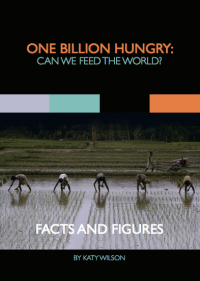 A new report by researchers at the University of Minnesota’s Institute on the Environment, published in Science, shows that an extra 3 billion people in the world need not lead to higher levels of hunger if existing cropland is used more efficiently, additionally reducing agriculture’s environmental impact. The report focused on 17 crops that account for 86% of the world’s crop calories as well as the majority of irrigation and fertilizer use. The hope is that the report can help guide and prioritise donors’ and policy makers’ activities for the greatest benefit.
A new report by researchers at the University of Minnesota’s Institute on the Environment, published in Science, shows that an extra 3 billion people in the world need not lead to higher levels of hunger if existing cropland is used more efficiently, additionally reducing agriculture’s environmental impact. The report focused on 17 crops that account for 86% of the world’s crop calories as well as the majority of irrigation and fertilizer use. The hope is that the report can help guide and prioritise donors’ and policy makers’ activities for the greatest benefit.
The report identifies three areas of priority that, with the suggested actions, hold the most potential for meeting global food needs and reducing agriculture’s environmental footprint, a key pillar of sustainable intensification. Geographically the majority of these opportunities occur in China, India, U.S., Brazil, Indonesia, Pakistan and Europe. To summarise we need:
1. To produce more food on existing land, in particular closing yield gaps. An estimated 850 million people could be fed by closing the most dramatic yield gaps, in Africa, Asia and Eastern Europe, by 50%.
Closing yield gaps may seem a simple task through technology and access to productive resources but the International Center for Tropical Agriculture (CIAT) believe that we need to rethink how we approach yield gaps, taking a whole systems approach.
2. To grow crops more efficiently, in particular using water and nutrients more precisely and reducing climate impacts. The largest potential gains in reducing greenhouse gas emissions, as pinpointed by the study, could come from deforestation in Brazil and India, rice production in China and India and crop fertilization in the U.S.
The U.S., China and India, and particularly their maize, rice and wheat production, were also found to be the largest sources of the overuse of nutrients in the world. Across the globe 60% of nitrogen and around 50% of phosphorus applications are in excess of amounts needed by crops. A 2012 article on China Dialogue highlights the dangers of overusing fertilizer. Improving the efficiency of fertilizer use would also reduce greenhouse gas emissions. Together with Pakistan these countries are also responsible for the majority of irrigation water use, water that could be reduced by 8 to 15% without yield penalties by improving crop water use efficiency.
3. To use crops more efficiently, in particular reducing food waste and reducing the proportion of crop calories going into livestock feed as opposed to directly for human consumption. Current crop animal feed, predominantly maize, could feed approximately 4 billion people. Such a shift would require widespread behavioural change, reducing the overreliance on meat in developed countries, although the report’s authors highlight the potential to shift crops from livestock to humans in times of crisis. [Read more…]








